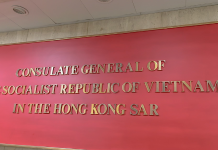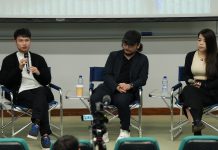Jonathan Chui Chuen-chung, who received his master’s degree in meteorology in the United Kingdom and interned at the Macao Meteorological and Geophysical Bureau, is also dedicated to mastering weather instruments. “The size of weather stations is not big, and the optimal installation site is the roof top,” he says. Chui adds that the cost for a professional, stable, accurate and wireless weather station set-up is about HK$3,600.
But while meteorology can be a high-end hobby, it does not have to be. Chui explains this is because no expense is needed to study and analyse the online data collected by both official and unofficial departments, or to utilise applications like Google Maps. Even for those who are keen on wind chasing, the price of a basic and amateur anemometer can be as low as about HK$100. Anemometers can be easily bought online or in shops in Shamshuipo. Although the quality and the accuracy of these cheap devices are not guaranteed, Chui says there are limitations even with the top-end equipment.
Another young meteorology amateur, 20-year-old Adrian Ou Pan-hin, agrees with Chui that the variation between weather forecasts and the real situation can be huge due to the complex and variable nature of different weather phenomena. “Even with the most sophisticated devices, it is difficult for agencies to conduct the most precise weather prediction,” he says.
Ou says although few Hongkongers are passionate about this science, Hong Kong citizens are interested in and do pay attention to the latest developments of typhoons because these can have a big impact on arrangements for work and school.
Given that weather conditions can be so fickle, the credibility of the HKO may be affected and people’s daily lives can be disrupted when there are misleading rumours about the track and likely impact of typhoons. In August 2008, people were so obsessed with updates about Typhoon Nuri that they started sending and re-sending text messages about the impending hoisting of a T9 signal one day before it actually went up.
The serious weather geeks only want to share accurate and verified information with the public. “We, the meteorology lovers, have a strong sense of obligation to promulgate useful and meticulous information to the general public,” Ou says.
As their hobby demands that they go out in uncertain and unstable weather, Ou insists that wind chasers should be in groups and be well-equipped physically, intellectually and mentally. “I am not like the secondary school students who go storm-chasing no matter what the circumstance is,” he says.
Roger Li Hon-man, who is now 16 years old, got his first taste of wind-chasing at Hung Hom Ferry Pier in 2012 when he experienced Typhoon Vicente, the first typhoon to trigger a Hurricane Signal No.10 since Typhoon York in 1999. More than 130 citizens were injured during the passage of Vicente.
Li, who has been in love with typhoons since the age of seven, says he prepared for his first wind-chasing experience for two years by studying many resources on meteorology and lobbying his parents. He also saved up to buy the necessary equipment, such as waterproof clothing, sports backpacks and of course, anemometers.
When Vicente lashed Hong Kong on 24 July 2012, he and a few friends braved the wind and rain to walk from Tsim Sha Tsui to Hung Hom to record the wind speed. “The pouring rain and gusty wind were slapping our faces, and I could barely open my eyes,” he recalls, “and my two anemometers broke under the blasts of wind.”
Exciting as it may seem, Li says that they eventually left before the Increasing Gale or Storm Signal No.9 was in force.
“Humans cannot conquer nature, and I kept reminding myself that I need not risk my life,” he says.
Edited by Cherry Wong






































